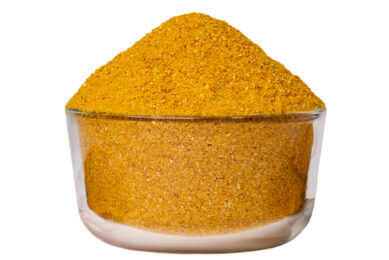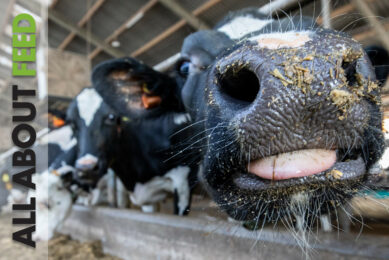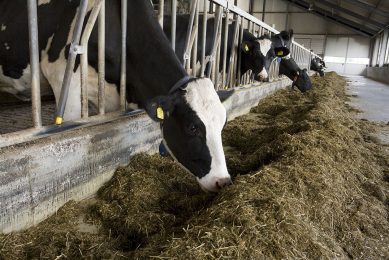DDGS
Distillers Grain is an important co-product of dry mill ethanol production.
The dry mill ethanol production process uses only the starch portion of the corn, which is about 70% of the kernel. All the remaining nutrients – protein, fat, minerals, and vitamins – are concentrated into distillers grain, a valuable feed for livestock.
Dry Distillers Grain
Distillers grain can be fed to livestock wet or dry. Dried distillers grain (DDG) is the most common variety. Drying the distillers grain increases its shelf life and improves its ability to be transported over longer distances.
Wet Distillers Grain
If a consistent nearby market can be secured, ethanol producers can supply the feed as wet distillers grain (WDG). The wet form is not as easily transportable, but the cost of drying the product is removed.
Dried distillers grain with solubles
Dried distillers grain with solubles (DDGS)is the form available to the feed industry. The liquid that is separated from the mash during the distilling process is partially dehydrated into a syrup, then added back onto the dried distillers grain to create DDGS.
DDGS is a high quality feedstuff ration for dairy cattle, beef cattle, swine, poultry, and aquaculture. The feed is an economical partial replacement for corn, soybean meal, and dicalcium phosphate in livestock and poultry feeds.
Quality
Quality of DDGS remains an issue. The American Feed Industry Association together with partners recently published a report that offers recommended test methods for determining the moisture, crude protein, crude fat and crude fiber content of DDGS, factors which are often sees as key determinants of the market value of DDGS. The lack of standardized test methods has led to varying results and uncertainty for buyers and sellers of distillers grains.
Related news stories:
Flowability problems
Dried distillers’grains with solubles (DDGS) can have some undesirable handling characteristics related to poor flowability under certain conditions. Reduced flowability and bridging of DDGS in bulk storage containers and transport trucks hampers their in feeding livestock.
Related news story:
In ruminant diets
Historically, over 85% of DDGS has been fed to dairy and beef cattle, and DDGS continues to be an excellent, economical feed ingredient for use in ruminant diets.
Ruminants, especially dairy, benefit the most due to the nutrient contribution and the bypass protein of DDGS. A common level of DDGS is 10% in many non-ruminant diets.
In pig diets
However, research has shown that DDGS has been successfully incorporated into swine diets up to 20%, and has resulted in similar performance and carcass characteristics as pigs fed a typical corn-soybean meal diet. However, feeding DDGS to nursery and grow-finish pigs has variable effects on growth performance , according to studies by the Kansas State University.
Related news stories:
- How best to feed DDGS to pigs?
- Study into distillers grains affect on hog growth
- Be careful with high amounts of DDGS
Related link:
Available articles:
- DDGS: growing potential in pig diets (Feed Mix 14.5)
- Pigs and poultry perform well on distiller’s dried grains (Feed Tech 8.7)
- Pig feed reviews (Feed Tech 7.4)











